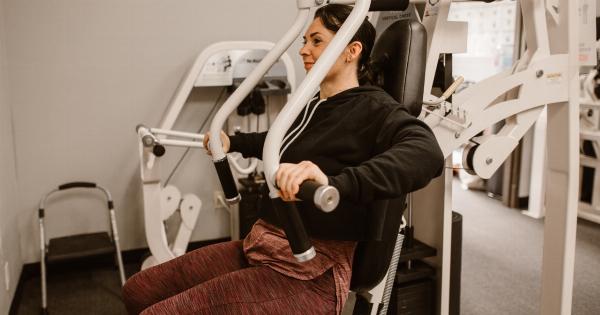Knee replacement surgery is one of the most common orthopedic procedures performed worldwide, with over 600,000 procedures performed annually in the United States alone.
The surgery involves replacing the damaged knee joint with an artificial joint, called a prosthetic. While it is a safe and effective procedure, it can be challenging for the surgeon due to the complexity of the knee joint. However, digital-assisted total knee arthroplasty (TKA) is changing this.
What is Digital-Assisted Total Knee Arthroplasty?
Digital-assisted total knee arthroplasty (TKA) is an advanced surgical technique that employs computer software and robotic technology.
It involves 3D imaging of the patient’s knee joint, which enables the surgeon to create a virtual model of the knee, simulating the surgical procedure before it happens. The surgeon can use this virtual model to determine the precise placement of the prosthetic, and to map out the surgical plan before the surgery even begins.
The use of computer software and robotic technology can help to ensure a more accurate and precise surgical outcome, potentially leading to better patient outcomes as well as shorter hospital stays and rehabilitation times.
Advantages of Digital-Assisted Total Knee Arthroplasty
The following are a few of the benefits of digital-assisted total knee arthroplasty:.
Improved Precision and Accuracy
Digital-assisted TKA allows for greater precision and accuracy during the surgical procedure.
The software can help the surgeon to visualize the knee in 3D, ensuring that the prosthetic is placed in the exact location needed for optimal functionality and stability.
Reduced Surgical Time
Because the surgeon is able to plan the surgery in advance using a virtual model of the patient’s knee, the surgical time is often reduced. This can reduce the overall stress on the patient’s body and also reduce recovery time.
Decreased Post-Operative Pain and Discomfort
Patients who undergo digital-assisted TKA often experience less post-operative pain and discomfort because the surgical procedure is less invasive and more precise. This can mean a more comfortable and speedy recovery for the patient.
Shorter Hospital Stays and Rehabilitation Times
Patients who undergo digital-assisted TKA often have shorter hospital stays and rehabilitation times. This can reduce the cost and time associated with the procedure.
Components of Digital-Assisted Total Knee Arthroplasty
Digital-assisted total knee arthroplasty involves the following components:.
Pre-Operative Imaging
Pre-operative imaging is a crucial component of digital-assisted TKA. The surgeon uses advanced imaging techniques such as CT scans or MRI scans to create a 3D model of the patient’s knee.
This model can then be manipulated using computer software to simulate the surgery and plan the placement of the prosthetic.
Computer-Assisted Surgery
During the surgery, the surgeon uses computer software to help guide the placement of the prosthetic. The software displays a 3D model of the patient’s knee, which provides real-time feedback on the position and orientation of the prosthetic.
Robotic Assistance
Some digital-assisted TKA procedures involve the use of a robotic arm to assist the surgeon during the surgery. The robotic arm can help to ensure that the prosthetic is placed exactly where it needs to be for optimal function and stability.
Candidates for Digital-Assisted Total Knee Arthroplasty
The following are some of the characteristics that make a patient a good candidate for digital-assisted TKA:.
Advanced Osteoarthritis
Digital-assisted TKA is typically recommended for patients with advanced osteoarthritis of the knee.
This means that the natural cartilage in the knee joint has been severely damaged or worn away, resulting in bone-on-bone contact and chronic pain and joint stiffness.
Failed Conservative Treatment
Prior to recommending TKA, the surgeon may recommend several conservative treatment options, such as physical therapy, medications, or joint injections.
If these approaches have failed to provide relief or if the patient’s condition has continued to worsen, TKA may be recommended.
Good Overall Health
Prior to undergoing any major surgical procedure, the patient’s overall health must be considered.
Digital-assisted TKA is typically recommended for patients who are in good overall health and do not have other medical conditions that could complicate the recovery process.
Potential Limitations of Digital-Assisted Total Knee Arthroplasty
While digital-assisted TKA offers several benefits, there are also some potential limitations of the technology:.
Cost
Because digital-assisted TKA involves the use of computer software and potentially robotic technology, the cost of the procedure may be higher than traditional TKA.
This could be a limiting factor for some patients, or for those with limited insurance coverage.
Limited Availability
Currently, not all hospitals and medical centers offer digital-assisted TKA. This could limit access to the technology for patients who are interested in this approach.
Less Surgeon Experience
Because digital-assisted TKA is relatively new, some surgeons may have less experience with the technology. As a result, patients may need to do additional research and seek out surgeons who have experience with the technology.
Conclusion
Digital-assisted total knee arthroplasty offers several benefits over traditional TKA.
It is a safe and effective procedure that can lead to improved surgical accuracy and precision, reduced post-operative pain and discomfort, and shorter hospital stays and rehabilitation times. While there are some potential limitations to the technology, it is an exciting advancement in orthopedic surgery that has the potential to greatly improve patient outcomes.





























